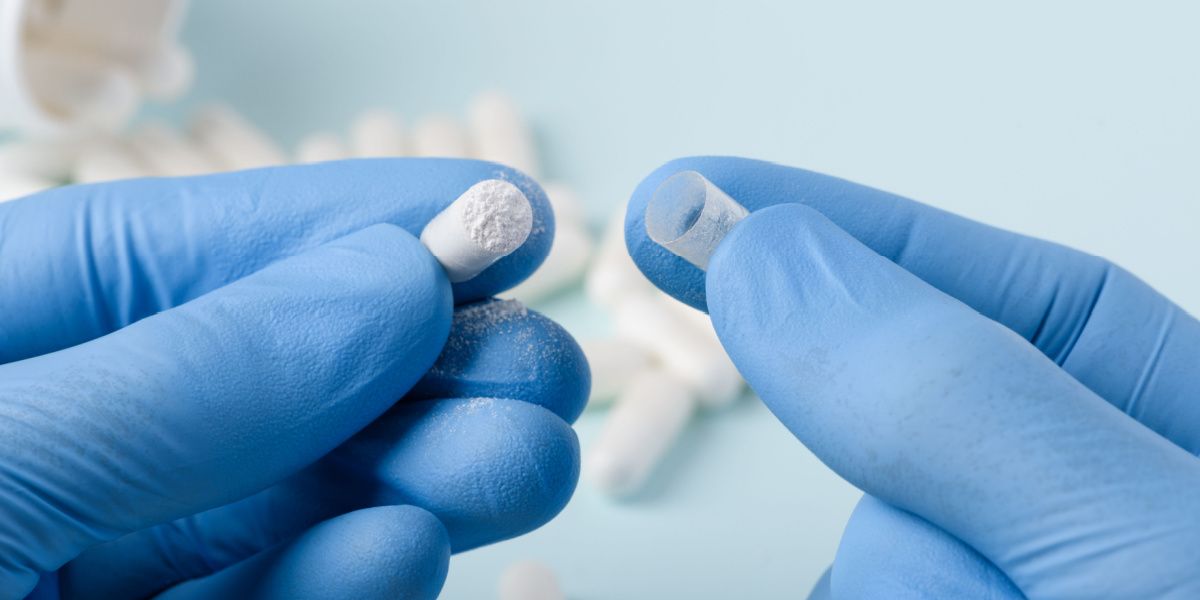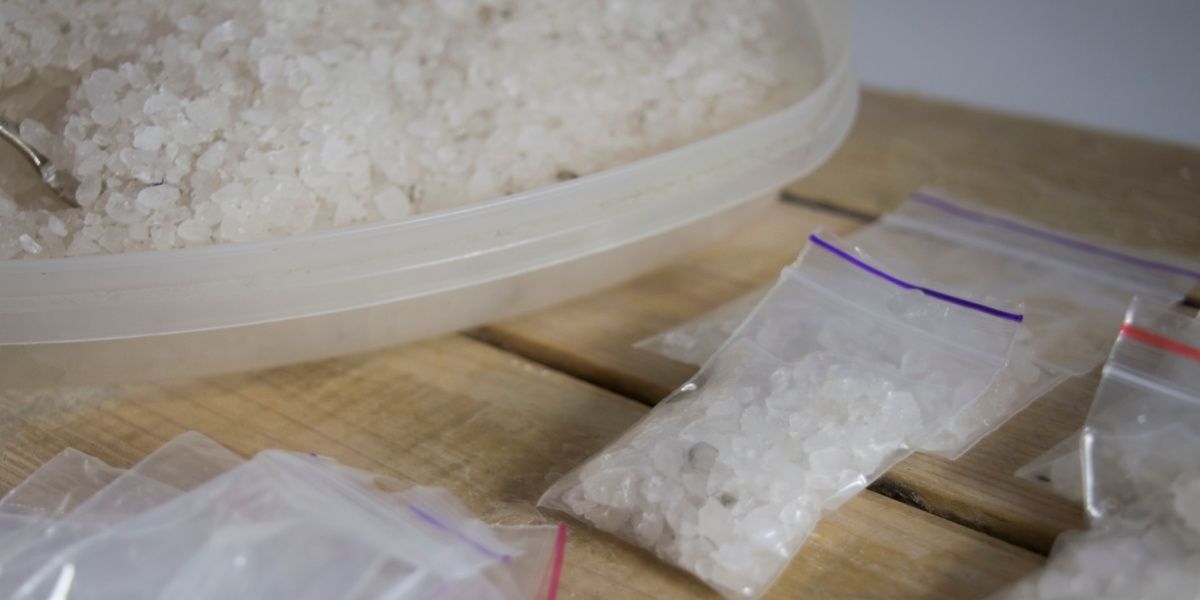Abuse of opioids has become a national health crisis in the United States. When most people think of opioid abuse, an image of pill-popping or injecting heroin will cross their minds. However, new methods of abusing opioids have evolved over the past couple of decades. 'Lean' is one of the most popular opiates as it is easy to obtain and has prominence in popular music culture. But what is lean and why is it so popular?
- Lean's primary ingredients can be bought over the counter in most states, making it a popular recreational drug with young people and teens.
- If prescription cough syrup is unavailable then over-the-counter (OTC) cough syrup containing dextromethorphan (DXM) is often used instead.
- Consuming DXM lean is called "robotripping" as its effect feels closer to that of ketamine or PCP instead of the opioid effects of codeine lean.
.jpg?v=1722503149)
What is lean (purple drank)?
Lean is a liquid cocktail containing multiple substances, with the primary mixture containing prescription-strength cough syrup (Codeine), soda, and hard candy such as Jolly Ranchers which is often drunk at parties. In some instances, it can also contain other illicit substances such as molly, meth, or cocaine.[1]
The name originates from how the drink makes individuals lose coordination and balance due to its depressant and sedative effects.
Lean's non-opiate primary ingredients can be bought over the counter in most states, making it a popular recreational drug with young people and teens. This has been further exacerbated by lean's popularity and glorification in hip-hop culture, with artists like Lil Wayne, 2 Chainz, and Mac Miller referring to the substance in their songs.
As lean is mixed by the end user, the quantities of Codeine (an opioid) that go into it, as well as other substances, can vary greatly which increases the risk of accidental overdose and dependence.
Other names for lean
- Sizzurp
- Purple drank
- Dirty Sprite
- Syrup
- Purple stuff
- Purple jelly
- Texas tea
- Purp
- Barre
How is lean made?
Lean is traditionally made with three primary ingredients;
- Prescription cough syrup containing Codeine and the antihistamine Promethazine
- Soda (often 7 Up, Sprite, or other lemonades)
- Hard Candy (Jolly Ranchers, Nerds, Dweebs)
These ingredients are mixed together in a cup or bowl until the hard candies have dissolved slightly.[1] The resulting mixture is often purple in color, hence the name 'purple drank' often being used for the substance. Lean also often contains alcoholic liquors as well. Some lean has also been found to contain illicit drugs such as meth, cocaine, and Molly.
If prescription cough syrup is unavailable then over-the-counter (OTC) cough syrup containing dextromethorphan (DXM) is used instead.
DXM lean: Robotripping
Using cough syrups containing the cough suppressant dextromethorphan (DXM) instead of codeine as the primary ingredient in lean has become increasingly popular.[2] This is primarily due to DXM cough syrups being an OTC medication, meaning anyone can get hold of them.[3] This has made this method of taking lean popular with teens and young adults who are able to get the ingredients for it easily.
DXM contains psychoactive ingredients that when consumed in large amounts can cause euphoria, hallucinations, and other side effects associated with dissociative substances. Consuming DXM lean is called "robotripping" as its effect feels closer to that of ketamine or PCP instead of the opioid effects of codeine lean.[2]
As well as the "out of body" sensations felt from dissociative substances, consuming DXM in large quantities can lead to adverse side effects, such as:
- Nausea
- Dizziness
- Increased blood pressure
- Loss of coordination
- Numbness
- Rapid heart rate
- Hallucinations
- Memory loss
- Seizures
- Reduced oxygen to the brain (in rare cases)
How long does Lean last?
The immediate effects of lean are similar to those experienced with other forms of opioid abuse such as Vicodin or Oxycodone. Effects will normally take hold within 30 to 45 minutes (depending on certain factors) and full effects peak between one and two hours, lasting up to six hours.
Common side effects of lean
The ratio of depressants and sedatives in lean varies greatly depending on how it is made, the side effects can also differ massively between batches. Some lean drinks will cause mild euphoria, loss of balance and coordination, and tiredness whereas others can lead to seizures, coma, and fatal overdose.[3]
Common side effects include:
- Euphoria
- Nausea
- Dizziness
- Impaired vision
- Memory loss
- Hallucinations
- Seizures
Promethazine side effects
Promethazine is an antihistamine and antiemetic that is contained in many prescription cough syrups.[3] While Promethazine in small or prescribed doses is perfectly safe, it can cause sedative and euphoric reactions when taken in large doses alongside depressants, such as in lean.
Some common side effects of large doses of Promethazine include:
- Irregular heartbeat
- Blood pressure changes
- Dry skin
- Mucous membranes
- Hallucinations
- Breathing problems
Codeine side effects
Codeine is an opioid depressant and is the ingredient in cough syrup that suppresses the urge to cough. Despite being a less potent prescription opioid, it can cause feelings of relaxation, euphoria, and joy when taken in high doses.[3]
Codeine can also cause a range of hazardous side effects, such as:
- Brain damage
- Dizziness
- Flushing
- Respiratory depression
- Cardiac arrhythmias
Is lean addictive?
Yes, almost every component of lean can lead to tolerance, dependence, and addiction-forming. Opioids, alcohol, and sedatives all increase the levels of dopamine produced in the brain's limbic reward system, which leads to dependence on the substance forming.
Over time, dependence on lean can lead to uncontrollable cravings for the substance as well as other negative consequences that are the hallmarks of addiction.
The following are indicators that a person may have developed a lean addiction:
- You need more to feel its effects
- You drink it despite negative consequences to normal life
- You crave it constantly
- You drink it in order to cope with stress
- You feel withdrawal symptoms when not taking it
Withdrawal symptoms from lean
Lean addiction can come on quickly and can be difficult to overcome once it has taken hold. As with most forms of substance use disorder, one of the primary reasons people find it hard to stop lean use is the intense withdrawal symptoms felt when cessation begins.
Opioid withdrawal, such as from codeine, can be incredibly uncomfortable and can lead to adverse health conditions if not overseen by a medical professional. As lean contains other substances, it can complicate the withdrawal process further.
A full medical detox in an inpatient or outpatient rehab setting is the most proven way to overcome lean withdrawal successfully.
Lean withdrawal symptoms can include:
- Nausea
- Loss of appetite
- Irritability
- Diarrhea
- Sweating
- Anxiety
- Runny nose
- Chills
- Insomnia
- Muscle aches
- Seizures
Is lean dangerous?
The high doses of codeine found in lean (often up to 25 times the recommended dose), the combination of substances that are mixed into the substance, and the quantities in which it is consumed make lean an incredibly dangerous drug.[5]
The risk of a fatal lean overdose is always present when consuming the substance. The combination of codeine and Promethazine rapidly reduces breathing rates and blood pressure, which can cause respiratory depression. This reduces the amount of oxygen going to the brain and can cause irreversible anoxic brain damage if not reversed quickly. It can also lead to a complete cessation of breathing and, eventually, death.
Lean addiction treatment
Overcoming a lean addiction can be incredibly difficult to do alone. Intense cravings for the substance, matched with uncomfortable withdrawal symptoms, lead many people to relapse without medical supervision.
For the best chances of overcoming lean addiction, a combination of therapy and medical detoxification as part of a full addiction treatment plan is recommended.
Talking therapies such as cognitive behavioral therapy (CBT) can help users identify emotional links in behavior and substance use, identify the root cause, learn to control impulsive behaviors, and help with any co-occurring conditions (such as trauma, anxiety, depression, etc).
A full medical detox can ensure that withdrawal symptoms and cravings in the first instance are managed with medications such as suboxone and methadone.
If you or someone you care about is suffering from a lean addiction then help is available. Visit our addiction rehab directory to find treatment for lean addiction near you.




-guide-detail.jpg?v=1756808574)